Flashback from 2010-2011. Along with iridescent shark catfish (IDS), pacu have always been the most plentiful number-wise among our rescues. We probably rescued couple of dozen 1'-2' pacu in those years. They are also nasty, unacceptable tank mates for timid and relatively slow and large fish, such as IDS and other shy Pangasids, like the black ear, channel catfish and bullheads (Ictalurids), large Doradids, such as niger, granulated catfish, irwini catfish, soldier catfish, etc. They do ok with TSN and RTC and their hybrids, with paroon sharks and other aggressive or assertive tank mates.
We didn't know it back then when we started our rescue. Here they are in a 4000 gal basement pond, 40'x6'x3':
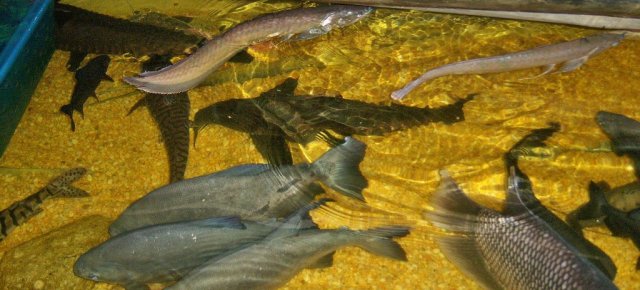
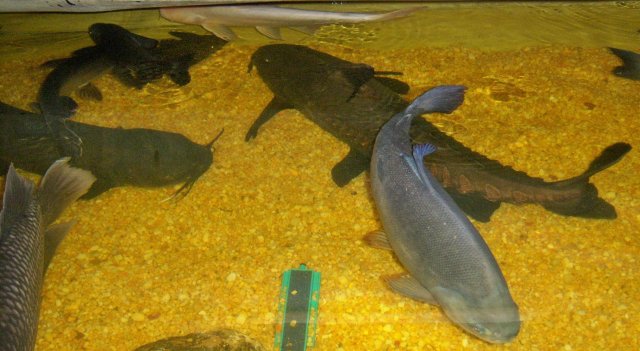
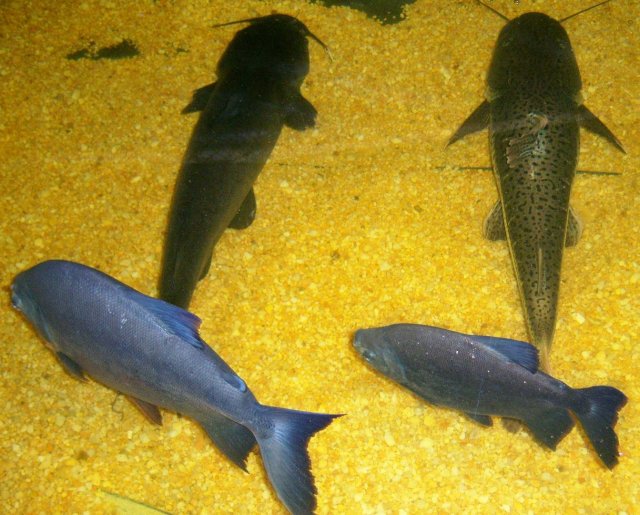
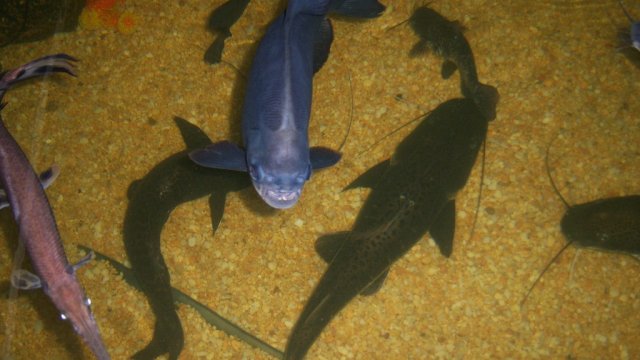
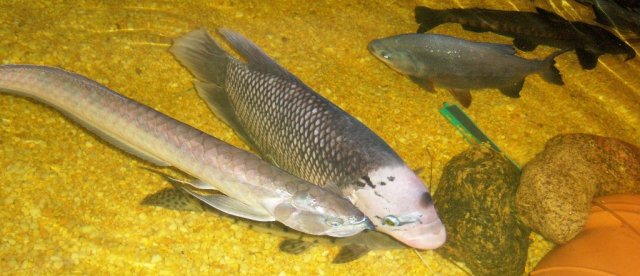
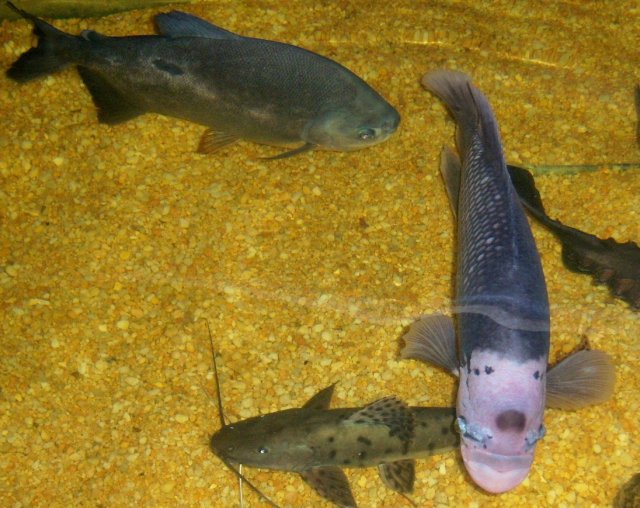
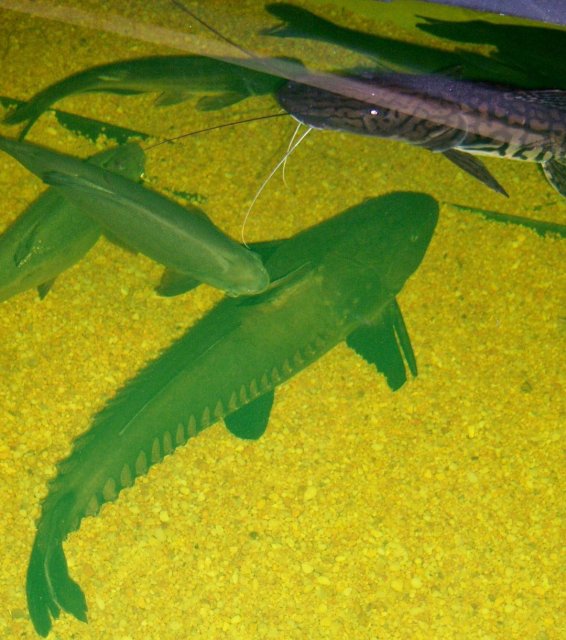
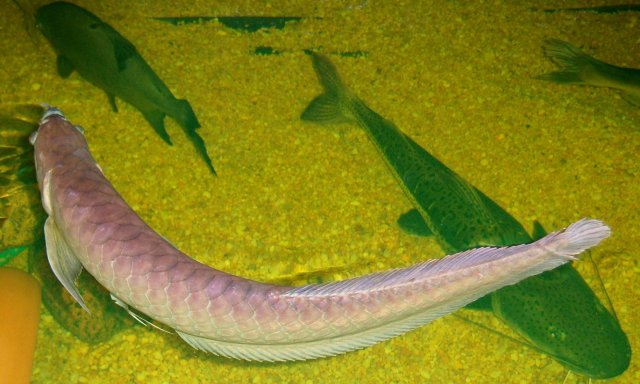
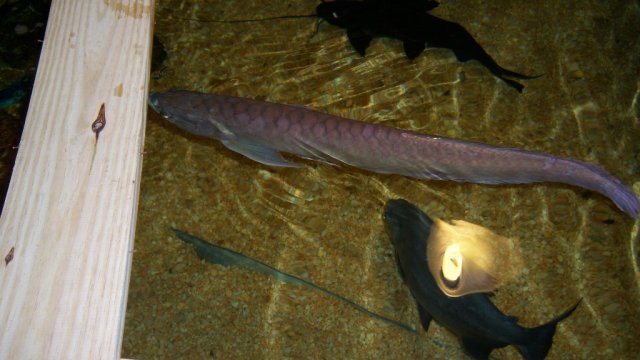
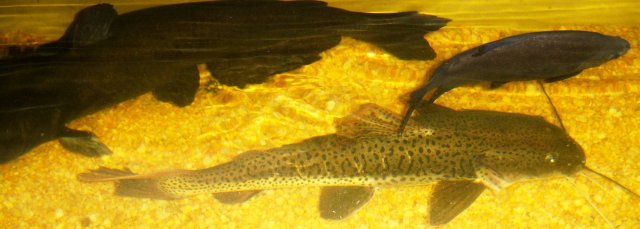
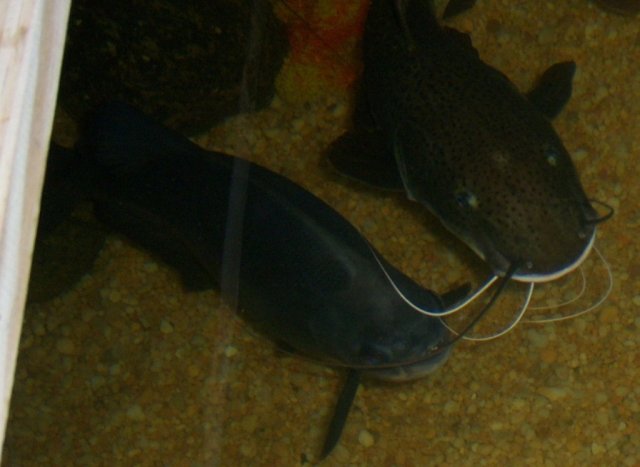
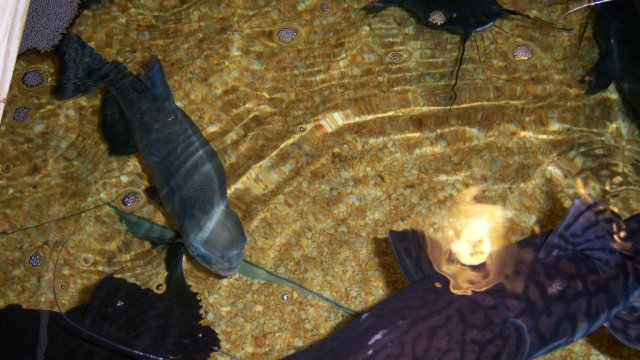
...
Back to 2017. Our current 7 pacu are in 4500 gal -
-- one albino about 2.5' long and ~1.5' tall; grew it up from a baby, got from snookn21 about 2.5 years ago
-- two are from Toyin, rescues, IDK the species - smaller ones with olive top and black bottom and fang-like skin flaps at the mouth
-- four are rescues from Gerber's Dayton, Ohio, Mar 2016 (got 7, 3 perished), were ~1'-1.5' in Mar 2016, very poor shape, mouth rot, thin, beat up; the biggest today is ~2' round disk
1 albino a rescue in 240 gal, still small, ~16"
Can someone proficient in pacu tell me the species of each kind - albino, Toyin's, and the four grey ones?
We didn't know it back then when we started our rescue. Here they are in a 4000 gal basement pond, 40'x6'x3':












...
Back to 2017. Our current 7 pacu are in 4500 gal -
-- one albino about 2.5' long and ~1.5' tall; grew it up from a baby, got from snookn21 about 2.5 years ago
-- two are from Toyin, rescues, IDK the species - smaller ones with olive top and black bottom and fang-like skin flaps at the mouth
-- four are rescues from Gerber's Dayton, Ohio, Mar 2016 (got 7, 3 perished), were ~1'-1.5' in Mar 2016, very poor shape, mouth rot, thin, beat up; the biggest today is ~2' round disk
1 albino a rescue in 240 gal, still small, ~16"
Can someone proficient in pacu tell me the species of each kind - albino, Toyin's, and the four grey ones?
Last edited:


